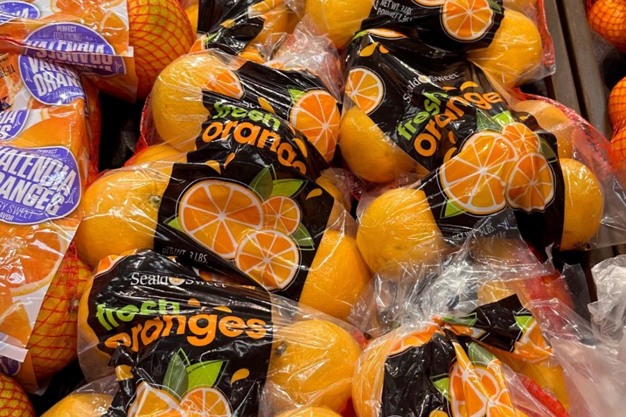It's been a tough season on import oranges from both Chile and South Africa. "Supply has been tight all season," says GT Parris of Seald Sweet.
For both Chile and South Africa, supply is between 20-30 percent down from the original projections at the start of the season. "That's due to some cold weather in Chile and South Africa had a lot of heavy rains during the first of the harvest where they had some droppage and couldn't make arrivals with that much rain," says Parris.
In turn, from both regions, it's made product tight each week, particularly on certain sizes. The season started with large sizes (48s, 56s, 40s) particularly tight from South Africa (which starts ahead of Chile's season). That put pressure on bigger sizes for retailers and wholesale markets.
"Then, halfway through the season, it started to flip. Because of the rain and maturing on the tree, it flipped and the fruit started to grow. Now we have more 48s, more 56s, and less of the bagging sizes–88s and 105s and it's now putting pressure on those," says Parris. "So it's been a challenging season, to say the least."

Transition to Valencias
Right now, navel oranges are still coming in and the transition has also begun to Midknight Valencias out of both regions. These are typically more medium-sized and are heavier on the 72 and 64 sizes which means there is more fruit available for bagging.
On top of that already tight availability, this season also saw a vessel from South Africa lost due to treatment issues which affected the industry. (That said, smaller vessels were still shipping fruit.) "However that was a large vessel and it had a real impact on the market," says Parris.
Meanwhile meeting that strong supply is good demand for navel oranges and that means that pricing is good on the fruit that is available outside the program business.
Looking ahead, fruit will likely continue to come in for another three weeks and then fully wrap up by the end of October. That largely makes way for domestic retail programs which begin around that time.
 For more information:
For more information:
G.T. Parris
Seald Sweet
Tel: +1 (772) 569-2244
[email protected]
www.sealdsweet.com
